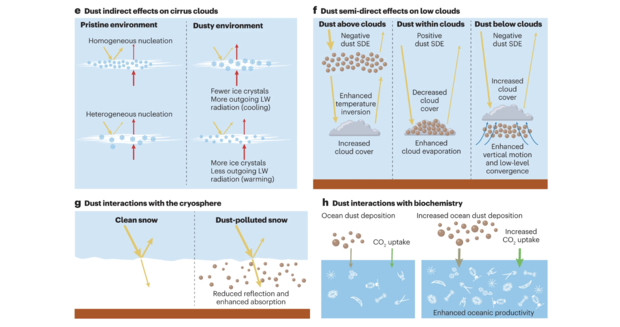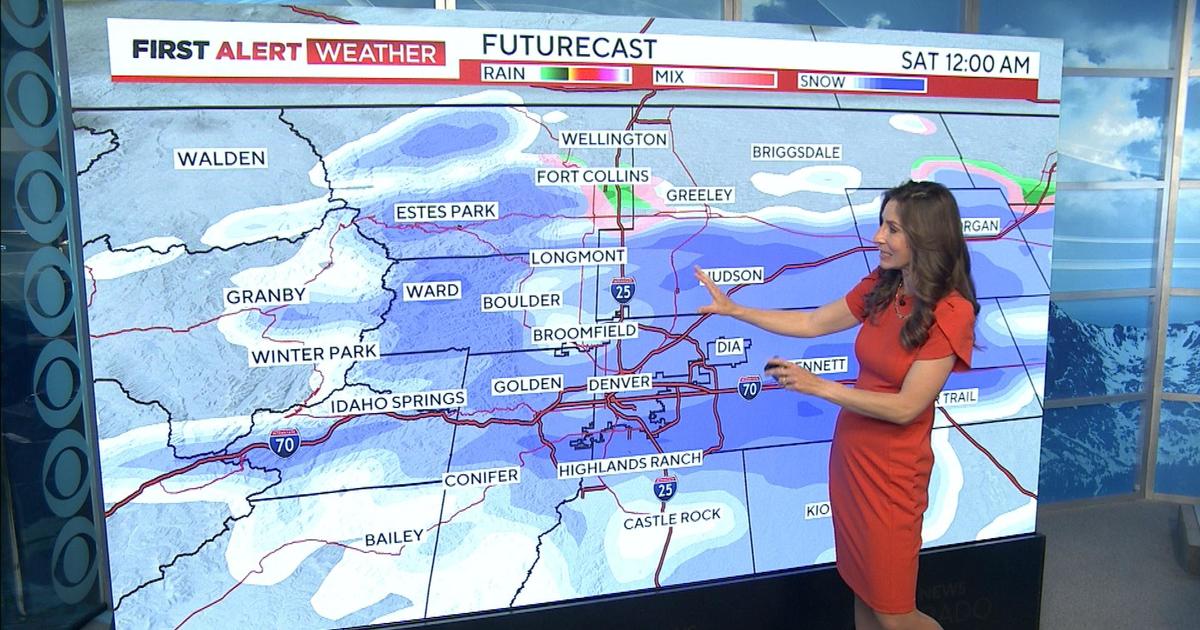Microscopic dust from desert storms has been hiding the true extent of global warming, study finds
Desert storms that have sent massive plumes of dust across the oceans may have a small but significant effect on global temperatures, scientists say. New research found the microscopic particles circulating through the atmosphere had a "slight overall cooling effect on the planet" that masked just how much the planet has truly warmed over recent decades.
The UCLA research, published in Nature Reviews Earth & Environment on Tuesday, found that the amount of atmospheric dust has increased by about 55% since pre-industrial times, with many ups and downs along the way. According to lead study author Jasper Kok, that increase is likely due to changes in global climate, such as wind speeds in some deserts, as well as land-use changes, such as transforming land into agriculture and diverting water for irrigation.
But the researchers say the impact of that dust has not been adequately factored into studies of global temperature trends. The overall increase in dust, according to Kok, "could have masked up to 8% of the greenhouse warming" that's taken place since the Industrial Revolution.
"By adding the increase in desert dust, which accounts for over half of the atmosphere's mass of particulate matter, we can increase the accuracy of climate model predictions," he said in a press release. "This is of tremendous importance because better predictions can inform better decisions of how to mitigate or adapt to climate change."
The increase in atmospheric dust largely stems from Asia and North Africa, the study says. It's estimated that 100 million tons of dust are picked up from Africa's Sahara Desert, according to NASA's Earth Observatory, which said that the Sahara is "by far" the largest source of atmospheric dust on the planet. The particles from these plumes serve a complex role. While they are known to trigger respiratory issues, degrade air quality and obscure visibility, they also absorb and reflect light from the sun and are filled with minerals that help feed plants and phytoplankton, according to NASA.
And when it comes to its impact on the climate specifically, the researchers found that dust particles only increase the complexity. In some ways, the dust contributes to warming, such as when it darkens snow and ice surfaces. But in others, it counteracts that warming, like when the dust helps reflect sunlight from the Earth and helps the ocean absorb more carbon dioxide, a greenhouse gas that largely contributes to planetary warming.
Stuart Evans, an assistant professor at the University of Buffalo who studies atmospheric dust, told CBS News that the study, which he was not involved in, helps provide a "benchmark" for how much change we have seen regarding atmospheric dust and climate change.
"It provides a starting point for further studies of the human impacts on this piece of the climate system," he said.
Overall, the study says "it is more likely that dust cools the climate than warms." But that information, according to Kok, is lacking from current climate models. His team looked at a dozen climate models, and he told CBS News that "not a single" one came close to capturing the increase they found.
"We show desert dust has increased, and most likely slightly counteracted greenhouse warming, which is missing from current climate models," he said. "The increased dust hasn't caused a whole lot of cooling — the climate models are still close — but our findings imply that greenhouses gases alone could cause even more climate warming than models currently predict."
Evans said he's seen dust in most models, but that it's "typically not well-represented."
"Most models don't capture the long-term trend at all," he said. "...If you want to use a climate model to predict the future, you'd want to know that it has correctly represented the past. And when it comes to dust, models aren't there yet."
That doesn't mean current models are wrong, both researchers said — just that there's now more information that can improve on our understanding. Evans said it could also help researchers understand more about climate sensitivity, or how sensitive Earth is to a variety of factors in the climate.
If the rise in atmospheric dust eventually slows down or begins to decline, "the previously hidden additional warming potential from greenhouse gases could cause somewhat more rapid climate warming than models predict," a press release from the University of California says.
But right now, it's unclear how the dust levels will change in the future. Kok explained that dust storms are "very complicated" and depend on a variety of factors, including wind speed, precipitation, evaporation and land-use.
"Although some areas, like the southwestern part of the United States, are predicted to get drier, possibly increasing dust there in the future, other areas like the Sahara desert might actually get wetter, possibly decreasing dust there," he told CBS News. "So what the future brings in terms of total dustiness is not known and models disagree on this, with some predicting more dust and others less dust."
Evans offered a similar assessment, saying "the future of dust is uncertain."
"The models can't agree ... and none of them have really distinguished themselves as being the single superior model that you should trust over others," he said. "...Predicting dust is hard because simulating dust is a very difficult challenge that is still being actively worked on."
But what we do know is that the planet has already warmed by about 2.2 degrees Fahrenheit (1.2 degrees Celsius) since the mid-1800s, with the past eight years, from 2013 to 2022, the hottest in recorded history. And Kok says if the dust had not increased, global temperatures would likely be another 0.1 degrees Fahrenheit higher.
As scientists have repeatedly stressed, every fraction of a degree matters when it comes to climate change.
"This is valuable in helping us improve our precision with our predictions because it is doing an accounting of a frequently overlooked aspect of the climate system," Evans said. "I think in terms of action, the only thing anybody needs to know is that greenhouse gases are making the world hotter and the only solution is to reduce their concentration in the atmosphere."





